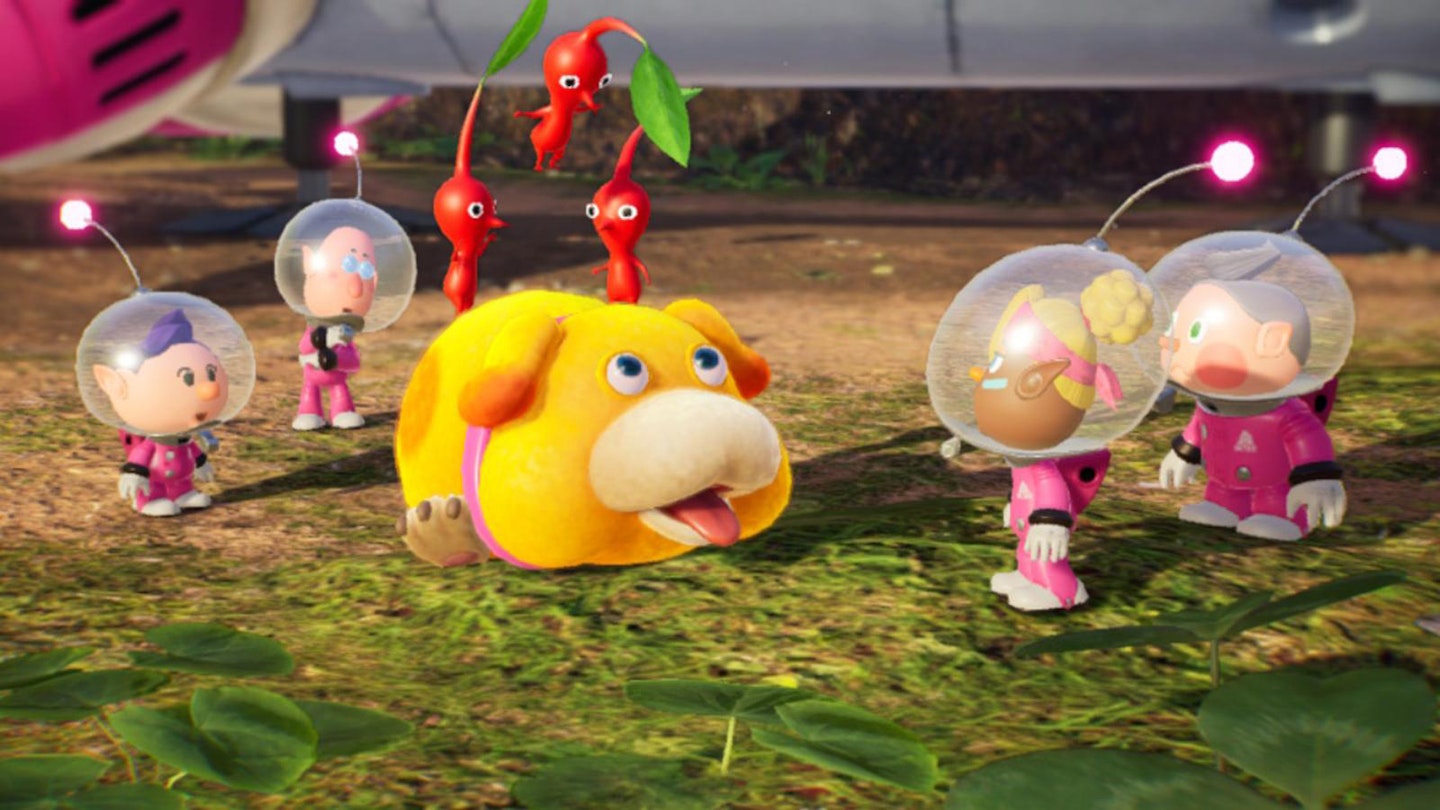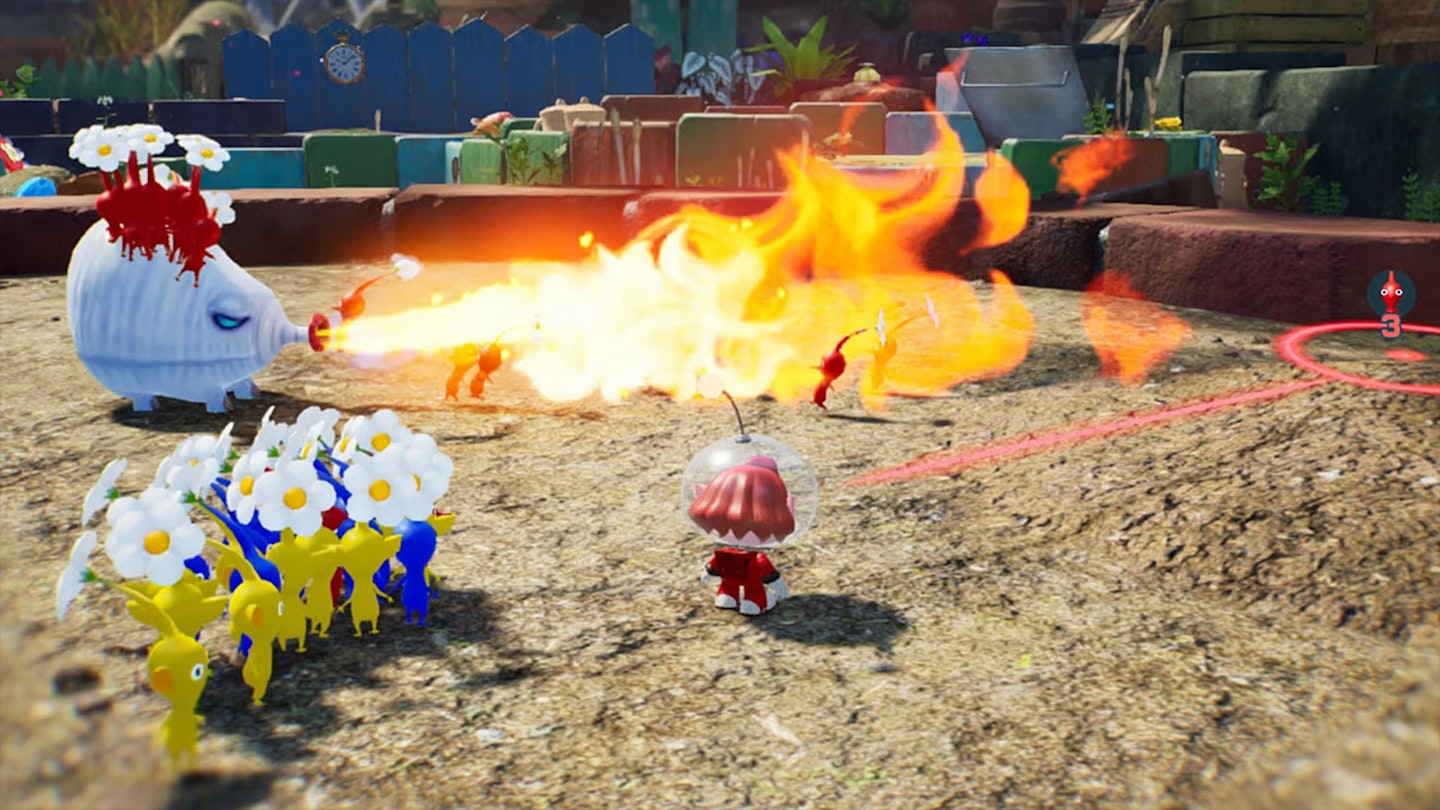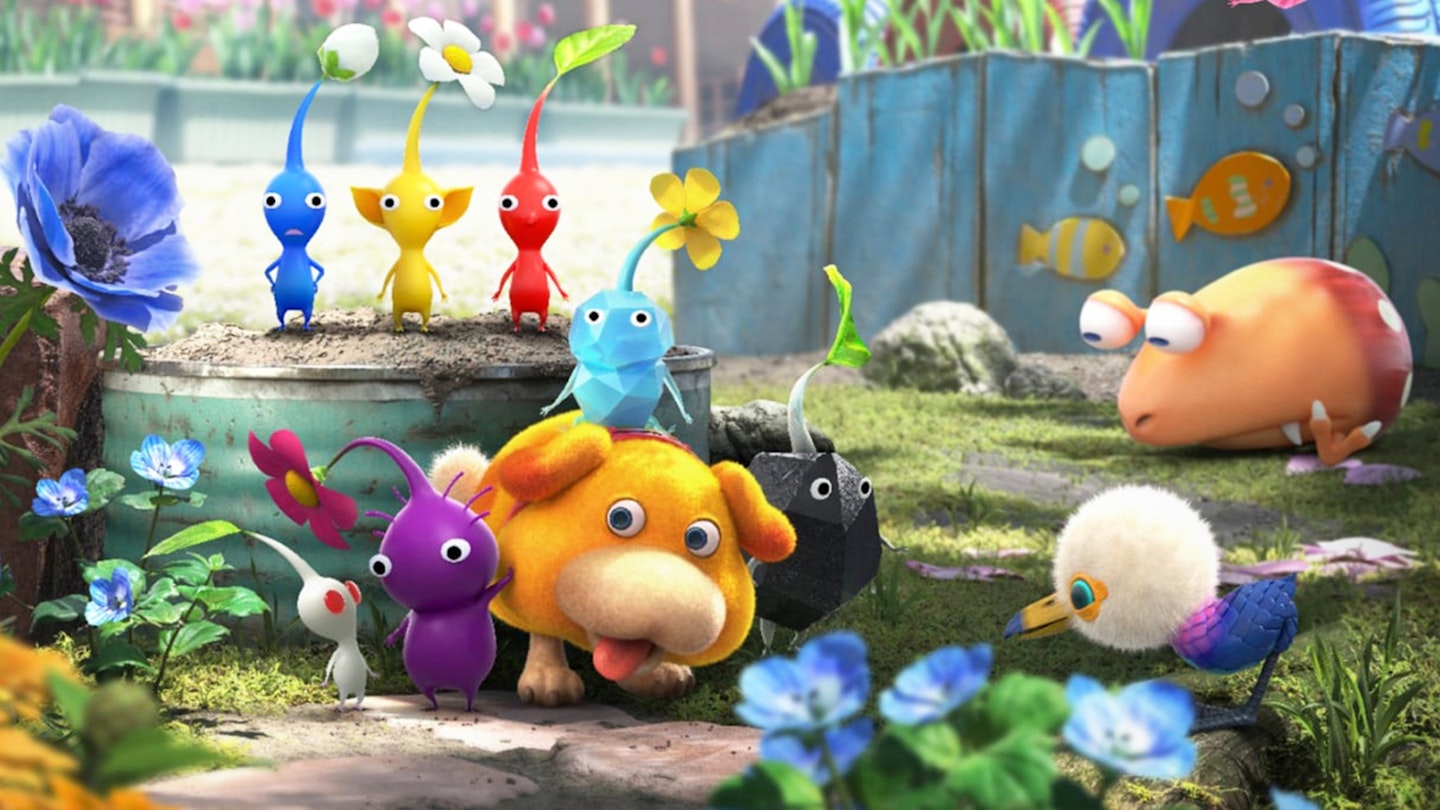Platforms: Nintendo Switch
Pikmin, as a franchise, is over twenty years old at this point, but it's never quite attained the level of acclaim that many of Nintendo's other first party properties have. Even more recent series, such as Splatoon, have more deeply rooted themselves in the Japanese publisher's roster than this quirky series of quasi-strategy games, despite it being the brainchild of legendary Super Mario creator Shigeru Miyamoto.
Maybe it was poor timing – Pikmin and Pikmin 2 released on the underappreciated GameCube, Pikmin 3 on the doomed Wii U – that led to it being overlooked. Or perhaps it's the series' gentle gameplay, exploring the world as miniature aliens while flinging hordes of colourful plant creatures around to recover trinkets or defeat enemies, that's never quite clicked with players. Whatever the reason, if this fourth major entry doesn't prove a breakthrough for Pikmin, we don't know what will – between releasing on the blockbuster Switch and offering the most robust gameplay mechanics yet seen, Pikmin 4 sees the series finally in full bloom.

Once again, series' icon Captain Olimar has crash landed on a strange alien world that looks curiously like a beautiful human-sized back garden, and must rely on the abilities of the strange Pikmin creatures he encounters to recover missing parts of his ship. Like previous games, each breed of Pikmin has distinct attributes that help navigate the world and survive its threads. Red Pikmin are invulnerable to fire, for instance, allowing them to cross burning terrain and take on flame-spewing enemies. Yellow ones are similarly immune to electricity but also capable diggers, while Blues can wade through water unfazed. Strong Purple, durable Rock, speedy Winged, and poisonous White Pikmin all make their return too, with their own strengths and weaknesses to master.
Only this time, that's all just the intro. For most of the game, you're not playing as Olimar, but rather a new recruit to the wider Rescue Corps – and in a series first, your player character is customisable, with a decent suite of options in keeping with the game's cute aesthetic. As part of a squad chasing Olimar's distress signal, you've ended up crash landing as well, with crew members left scattered across the planet. Each in-game day sees you venturing out into uncharted territory to rescue the crew, recover other castaways, and look for clues to Olimar's whereabouts, racing the clock to achieve as much as possible before sundown.
Pikmin 4 refines everything that previously worked in the series, improves what didn't, and adds a host of new content and play modes.
It's slow going to start with – possibly too slow for some, with Nintendo opting for some incredibly intrusive handholding early on, interrupting play every few minutes with a forced bit of dialogue or explanation for stuff even newcomers would have figured out – but as Pikmin 4 lets players off the leash, it blossoms into an incredibly rich and rewarding experience. A mix of returning and brand new features build out the game, such as explorable caves making a reappearance for the first time since Pikmin 2. These subterranean mazes are packed with puzzles to solve, bosses to vanquish, and treasures to find, and sometimes navigating a cave is the only way to reach new areas in the overworld, making everywhere feel more connected and intricately designed.
Elsewhere, each crew member rescued opens up extra features in a hub area, from scientist Russ cooking up protective kit or gadgets such as bombs that can help combat enemies or speed up exploration, to doctor Yonny, who unlocks new night-time expeditions. These nocturnal missions provide one of Pikmin 4's best new features, a twist on tower defence games where you'll need to guard "Luminknolls" from dusk 'til dawn, with only the new Glow Pikmin to aid you. These bioluminescent creatures only come out after dark, but prove more than capable of holding off hungry enemies through the night, so long as you tactically manage where and how to deploy them.

Another new Pikmin species, Ice Pikmin – which can float and freeze bodies of water they're thrown into – also impacts how you'll approach survival during the day, but Pikmin 4's biggest difference to its predecessors is the introduction of Oatchi, a bipedal dog-like 'Rescue Pup'. Like Pikmin, Oatchi can carry objects and attack enemies, but also has a host of dedicated skills that affect how you explore. The pupper can sniff out hidden treasure, helping track down collectibles you may have missed, and has a powerful and versatile Rush attack, used for shattering obstacles, shaking collectibles loose, or charging enemies. Both your player character and your current swarm of Pikmin can ride on Oatchi's back too, which allows you to jump up otherwise unpassable ledges and, as Oatchi grows and learns to swim, ferry Pikmin that would normally drown across water. Given you're typically limited to three types of Pikmin in your squad at any one time, it's a nice way of being able to play around with how and where you deploy your helpers.
You'll also be able to switch to controlling Oatchi directly. Sometimes you'll be forced to, sending them through a pipe to reach a distant switch, or if a cave level deliberately separates you. Other times, you'll want to take direct control to better or more accurately assault enemies. Learning when and how best to use Oatchi's abilities is a key skill in Pikmin 4, and can drastically impact how successfully each day's rescue efforts go.
Through it all though, it's Pikmin 4's dedication to Dandori that is the most pivotal shift. What's Dandori? Simply put, a philosophy of efficient planning, here integrated as gameplay mechanic that can drastically ratchet up the difficulty. Dandori Battles are special caves that will test your abilities to manage Pikmin to their limits, charging you with gathering more items and doing it faster than a "Leafling" rival, while Dandori Challenges give you a strict time limit to defeat enemies and grab a set number of items. Both types can be extremely tough, representing some of the most difficult moments in the series' history, but they're all so meticulously designed that you can't help but appreciate them.
Those dedicated Dandori levels are ultimately about testing time and resource management skills, working out whether it's best to tackle that enemy or clear this obstacle first, and figuring out how best to split your Pikmin forces to achieve those objectives. But they're also designed to change your thinking about the game as a whole, improving how you do all of those things in the wider game. Pikmin's strategy elements were always fairly low-key, but here they're fine-tuned to the extent that good Dandori practices can enhance how you explore each surface level, maximising the treasure recovered or castaways rescued each day.
It's that degree of evolution that finally, two decades on, gives Pikmin its best shot yet at really clicking with players on a grander scale. Pikmin 4 refines everything that previously worked in the series, improves what didn't, and adds a host of new content and play modes to elevate the whole package. It's still accessible to newcomers, but no longer so simple that it feels like "My First RTS". Hands down, this is the best Pikmin yet.
